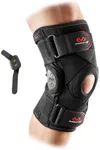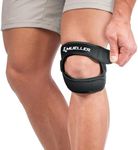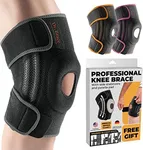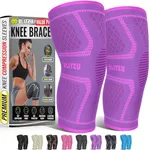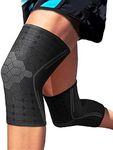Buying Guide for the Best Hiking Knee Brace
Choosing the right hiking knee brace is crucial for ensuring comfort, support, and injury prevention during your outdoor adventures. A knee brace can help stabilize your knee, reduce pain, and provide the necessary support to keep you moving confidently on various terrains. When selecting a knee brace, it's important to consider several key specifications to find the best fit for your needs. Here are the key specs to look out for and how to navigate them.Support LevelThe support level of a knee brace indicates how much stability and protection it offers. This is important because different activities and injury levels require varying degrees of support. Support levels can be divided into three segments: mild, moderate, and maximum. Mild support is suitable for minor aches and preventative measures, moderate support is ideal for mild to moderate injuries or instability, and maximum support is necessary for severe injuries or post-surgery recovery. Choose the support level based on your specific needs and the intensity of your hiking activities.
MaterialThe material of a knee brace affects its comfort, breathability, and durability. Common materials include neoprene, which provides good support and warmth but may be less breathable, and fabric blends like nylon or spandex, which offer better breathability and comfort. If you hike in hot climates, opt for a more breathable material to prevent excessive sweating. For colder environments, a thicker material like neoprene can provide additional warmth and support.
Fit and SizeA proper fit is essential for a knee brace to function effectively. This spec is important because an ill-fitting brace can cause discomfort and fail to provide adequate support. Knee braces come in various sizes, often based on the circumference of your knee or thigh. Some braces are adjustable with straps, while others come in fixed sizes. Measure your knee accurately and refer to the manufacturer's sizing chart to find the right fit. Consider whether you prefer a snug fit for more support or a looser fit for comfort.
Type of BraceThere are different types of knee braces, including sleeves, wraparounds, and hinged braces. This spec is important because each type offers different levels of support and flexibility. Sleeves provide mild support and are easy to wear, making them suitable for minor discomfort or preventative use. Wraparounds offer moderate support and can be adjusted for a better fit, ideal for mild to moderate injuries. Hinged braces provide maximum support and stability, making them suitable for severe injuries or post-surgery recovery. Choose the type based on your injury level and the support you need.
MobilityMobility refers to how much movement the knee brace allows while still providing support. This is important because you need to maintain a balance between support and the ability to move freely, especially during hiking. Braces with higher support levels may restrict movement more, while those with lower support levels offer greater flexibility. Consider your hiking style and the terrain you will be navigating. If you need more flexibility for uneven trails, opt for a brace that offers a good balance of support and mobility.
Additional FeaturesSome knee braces come with additional features such as gel pads, adjustable straps, or moisture-wicking properties. These features can enhance comfort and functionality. Gel pads provide extra cushioning, adjustable straps allow for a customized fit, and moisture-wicking materials help keep your skin dry. Consider which additional features are important to you based on your personal preferences and the specific conditions you will be hiking in.






